- Home
- Jane Yolen
Favorite Folktales From Around the World Page 3
Favorite Folktales From Around the World Read online
Page 3
And next to the hearth, by the bedside, on the back porch, round the cracker barrel, in the lap, the nonprofessionals kept the small spark alive when the guilds and the gatherings failed. These “lesser” tellers were not trained nor were they picked out for their fabulous memories, but they did manage more often than not to remember the story. What they did not actually remember, they either made up or left out. Mouth to ear, mouth to ear, over and over and over again, grandmother and grandfather, uncle and aunt, mother and father, nanny and nurse were in turn listener and teller.
Storytelling is still part of the everyday lives of many people throughout the world, though too often, what Don Futterman reported about a Moroccan community in the Negev is true: “The younger generations found storytelling to be backward, embarrassing. They were impatient with the elders’ foolish ramblings. So the old tellers had stopped telling stories almost completely.” When modern cultures clash with traditional ways, too often it is the older and quieter mode that dies. Still, storytelling exists around the world: the Japanese picture showman who holds up illustrations as he talks; the shadow-puppet players in Java; the Brazilian clothesline teller who, like the string tellers among the Lega of Zaire, attaches objects matching each tale in his repertory to the line; the Maître Conte in Haiti who announces a tale with the interrogatory Cric? and will not begin unless the audience shouts back Crac!; the women of the Walberi in Australia who trace pictures illustrating their stories in the sand; the Inuit who “storyknife,” drawing pictures in the snow in winter and the mud in summer with a whalebone knife to accompany their tales. And thanks to the rededication of storytellers in America, stories are once again alive and well across the North American continent.
V
Storytelling is a personal art that makes public what is private and makes private what is public. By choosing this or that story to tell, I reveal much about myself. Wonder tales, transformation stories, romances, stories with ironic twists, and jocular tales appeal to me the most, my preferences being informed by the fact that I am a twentieth-century American eclectic. In choosing stories for this book I had to stretch myself and pick stories that might not have appealed to me before. Those of us who are used to the plot-lines of European tales, where three is a prime magic number and events usually round off after the third adventure or the third task, may find that an American Indian story or an Eskimo tale or a piece from Siberia has a strange feel. It is not just that the names are difficult to pronounce—Celtic names are equally troublesome to the unpracticed tongue—but rather that the time sequences feel odd or the story seems to end in the wrong place. In order to minimize such feelings of strangeness, I have tried to make the stories more accessible by organizing the book into sections, thirteen (that magical number) in all.
Many of the tales included here are ones I have heard particular tellers tell. I cannot read the stories without the sound of their inflections in my ear. Laura Simms tells “The Little Old Woman with Five Cows” with rollicking, tongue-tripping gusto. Odds Botkins tells “Sedna” with guitar and bird-call accompaniment. Barbara Freeman can make an audience fall off its chairs laughing at “Old Dry Frye.” Connie Regan brings chills every time she tells “Mr. Fox.” But even if the readers of this book never hear these particular tellers, the stories have been chosen because of the felicitous way they speak from the page. I chose tales that I like and would enjoy coming to again and again in print.
Katharine Briggs points out in British Folktales that the study of folklore encompasses many disciplines: “Sociology, Anthropology, Literature, Linguistics, Music, Drama, History, Archaeology …” But the lover of folktales needs little access to the academic disciplines in order to enjoy these stories—only a listening ear and an open heart, those same attributes the original listeners had. Folk stories touch on all aspects of the human experience, another way of saying “Sociology, Anthropology, Literature, Linguistics …” that litany of academe. The best stories are the ones that forsake message or straight historical context and are just whopping good tales.
I am reminded of the encounter William James, the philosopher, supposedly had with an old woman after one of his public lectures on the solar system:
The ancient beldame came to the front of the hall, leaning on her mahogany walking stick. “You are wrong, Mr. James,” she said as she drew near. “The Earth does not revolve around the sun.”
“Then, Madame,” asked James politely, “what is your theory?”
“Our world is balanced on the back of a giant turtle,” she argued.
“And what,” asked James politely, “does that turtle stand upon?”
“Why he stands upon the back of a second, larger turtle,” the old woman replied.
“And,” James continued relentlessly, “on what does that turtle stand?”
The old woman drew herself up and stared James in the eye. “It’s no good, Mr. James,” she said ringingly. “It’s turtles all the way down!”
This, of course, may have been only an apocryphal meeting, a legend-in-the-making, an invented conversation ascribed to a famous personage. “Fakelore,” as folklorists Alan Dundes and Richard Dorson like to say. But within the context of literature, the James anecdote is quite appropriate. Literature is not made up of the pieces of periods and genres described by academic inquiry but is rather story resting on the sturdy back of Story. And it’s no use, my learned friends: it’s story all the way down.
That is really the genesis of this volume of tales from around the world: these are great stories for telling and listening, stories resting on stories. You will not find the most famous fairy tales here, for they are easily accessible elsewhere. Not “Cinderella,” but interesting other versions—“The Goose Girl” and “Vasilisa the Beautiful.” Not “The Frog-Prince,” but “The Toad-Bridegroom,” a Korean tale that handles some of the same material. Not “Bluebeard,” but “Mr. Fox.” The thumbprints of the other tales, like the whorls on a turtle’s shell, remind us of the historical passage of stories. My notes at the back of the book will detail a few of those curlicues, but the notes are not integrated into the text, because nothing should distract from the important matter—the stories themselves.
Like the hero of the Irish tale that opens the book, “The Man Who Had No Story,” a reader may come to this volume thinking he has no tale to tell. But by the end, there will be over 150 stories in his repertory. And if a teller ever gets stuck for a story—or is simply in no mood to recite—there is always a way out. He simply has to start the Japanese “Endless Story” or this round story heard by British collector Katharine Briggs:
It was a dark and stormy night, and the Captain stood on the bridge, and he said to the Mate, “Tell us a yarn.”
And the Mate began, “It was a dark and stormy night, and the Captain stood on the bridge, and he said to the Mate, ‘Tell us a yarn.’ And the Mate began …”
Given that story, the audience will soon enough take care of itself.
WHY WE TELL STORIES
For Linda Foster
1
Because we used to have leaves
and on damp days
our muscles feel a tug,
painful now, from when roots
pulled us into the ground
and because our children believe
they can fly, an instinct retained
from when the bones in our arms
were shaped like zithers and broke
neatly under their feathers
and because before we had lungs
we know, how far it was to the bottom
as we floated open-eyed
like painted scarves through the scenery
of dreams, and because we awakened
and learned to speak
2
We sat by the fire in our caves,
and because we were poor, we made up a tale
about a treasure mountain
that would open only for us
and because we were always
defeated,
we invented impossible riddles
only we could solve,
monsters only we could kill,
women who could love no one else
and because we had survived
sisters and brothers, daughters and sons,
we discovered bones that rose
from the dark earth and sang
as white birds in the trees
3
Because the story of our life
becomes our life
Because each of us tells
the same story
but tells it differently
and none of us tells it
the same way twice
Because grandmothers looking like spiders
want to enchant the children
and grandfathers need to convince us
what happened happened because of them
and though we listen only
haphazardly, with one ear,
we will begin our story
with the word and
—LISEL MUELLER
Stories about stories are common coin in the world’s cultures, for the power of tale telling—and therefore the importance of the storyteller—had to be remarked upon by the tellers themselves, one of the earliest practices in self-promotion.
A popular form of storytelling is the riddle tale in which the unriddler proves his or her worthiness. So widespread are these stories that there have been scholarly treatises on the subject. Riddles are among the earliest and most universal of pre-stories; each is a little metaphor that often includes character and setting as well as a mystery at its core. It is not a long step from there to investing the riddle with a coherent plot structure either surrounding the riddle itself or incorporated within the riddle’s body. Thus were riddle stories born. Some are highly elaborated tales, such as the Italian “Catherine, Sly Country Lass,” and some are just a tiny step up from the bareboned riddle, like the African “Leopard, Goat, and Yam.” But the tradition of riddling is so old and popular in folklore that even Samson’s famous “Out of the eater came forth meat, and out of the strong came forth sweetness,” in the Old Testament, and Oedipus’s contest with the Sphinx who asks, “What goes on four legs in the morning, two legs at noon, and three legs in the evening?” are not the earliest examples of the type. Plutarch wrote of Homer that he died of chagrin when he could not solve a riddle, and in the riddling stories sometimes a man’s or woman’s life is on the line.
Finally, the prevalence of stories about lies, liars, and lying contests is a further extension of the stories-about-stories genre. Actual brag stories or tall tales will be included in the section called “Wonder Tales,” but narratives about the liars themselves are included here.
THE MAN WHO HAD NO STORY
Ireland
Well, there was a man down here in Barr an Ghaoith a long time ago and his name was Brian Ó Braonachain. The trade that he had was cutting rods, making baskets of them, and selling them in Glenties and in Dunloe and in Fintown and everywhere he could get them sold.
But one year he was down here and there wasn’t a single rod in the whole of Barr an Ghaoith that he hadn’t cut, made baskets of, sold, and then spent the money.
Those were bad times—the English were in power and they wouldn’t let the Irish earn a single penny in any way. And Brian didn’t know what to do.
But in those days there was a little glen outside of Barr an Ghaoith that they called Alt an Torr and there were remarkably fine rods growing there. But nobody dared cut any rods there, for everyone made out that it was a fairy glen.
But one morning Brian said to his wife that if she made him up a little lunch he would go out and cut the makings of a couple of baskets and perhaps no harm would come to him.
The wife got up and made up a lunch for him. He put it in his pocket and he took a hook and a rope under his arm.
He went out to the glen and he wasn’t long in the glen until he had cut two fine bundles of rods.
When he was tying them together so that he could carry them with the rope on his back, a terrible fog started to gather around him. He decided that he would sit down and eat his lunch and perhaps that the fog would clear. He sat down and he ate the lunch he had with him and when he had finished eating it was so dark that he could not see his finger in front of him.
He stood up and he got terribly scared. He looked to the east and he looked to the west and he saw a light. Where there is light there must be people, he thought, and he headed for the light. And he tripped and fell the whole time, but in the end he came up to the light. There was a big long house there. The door was open and there was a fine light coming out of the window and the door.
He put his head in the door and an old woman was sitting in the corner and an old man on the other side of the fire. Both of them saluted Brian Ó Braonacháin from Barr an Ghaoith and wished him welcome, and they asked him to come up and sit in at the fire.
Brian came up and he sat in at the fire between the pair of them. They talked for a while. But he had not been sitting there long when the old man asked him to tell a fairy tale.
“That is something that I never did in all my life,” said Brian, “tell a story of any kind. I can’t tell Fenian tales or fairy tales of any kind.”
“Well,” said the old woman, said she, “take that bucket and go down to the well below the house and fetch a bucket of water and do something for your keep.”
“I’ll do anything,” said Brian, “except tell a story.”
He took the bucket, went down to the well and filled it with water from the well. He left it standing on the flagstone beside the well, so that the water would run off it, before he brought it in. But a big blast of wind came and he was swept off up into the sky. He was blown east and he was blown west and when he fell to the ground he could see neither the bucket nor the well nor anything at all.
He looked around and he saw a light and he made out that where there was light there must be people and he headed for the light. He tripped and fell the whole time, it was so dark. But at last he came to the light. There was a big long house there, far bigger than the first house, two lights in it and a fine light out of the door.
He put his head in the door, and what was it but a wake-house. There was a row of men sitting by the back wall of the house and a row of men sitting by the front wall of the house and up at the fire there was a girl with curly black hair sitting on a chair. She saluted and welcomed Brian Ó Braonacháin from Barr an Ghaoith and she asked him to come up and sit beside her on the chair.
Brian came up and he sat beside her on the chair and very shy he was, too. But he had not been sitting long when a big man who was in the company stood up.
“It is a very lonely wake we are having here tonight,” said he, “a couple of us must go to get a fiddler, so that we can start dancing.”
“Oh,” said the girl with the curly black hair, “you don’t need to go for any fiddler tonight” said she, “you have the best fiddler in Ireland among you here tonight,” said she, “Brian Ó Braonacháin from Barr an Ghaoith.”
“Oh, that is something I never did in my life,” said Brian, “play a tune on a fiddle, and there is no music or singing or fiddling of any kind in my head.”
“Oh,” said she, “don’t make me a liar, you are the very man who can fiddle.”
Before Brian knew he had the bow and the fiddle in his hand and he played away and they danced away, and they all said that they had never heard any fiddler playing a tune on a fiddle better than Brian Ó Braonacháin from Barr an Ghaoith.
The big man who was in the company stood up and said that the dancing must stop now. “A couple of us must go for the priest, so that we can say Mass,” said he, “for this corpse must go out of here before daybreak.”
“Oh,” said the girl with the curly dark hair, “there is no need to go for any priest tonight, the best priest in Ireland is sitting here beside me on the chair, Brian Ó Braonachain from Barr an
Ghaoith.”
“Oh, I have nothing of a priest’s power or holiness,” said Brian, “and I do not know anything about a priest’s work in any way.”
“Come, come,” said she, “you will do that just as well as you did the rest.”
Before Brian knew he was standing at the altar with two clerks and with the vestments on him.
He started to say Mass and he gave out the prayers after Mass. And the whole congregation that was listening said that they never heard any priest in Ireland giving out prayers better than Brian Ó Braonacháin.
Then the corpse was placed in a coffin outside the door and four men put the coffin on their shoulders. They were three fairly short men and one big tall man and the coffin was terribly shaky.
“One or two of us,” said the big man who was in the company, said he, “must go for a doctor so that we can cut a piece off the legs of that big man to make him level with the other three.”
“Oh,” said the girl with the curly black hair, “you don’t need to go for any doctor tonight, the best doctor in Ireland is here among you tonight, Brian O Braonachain from Barr an Ghaoith.”
“Oh, that is something I never did in my life,” said Brian, “doctoring of any sort. I never got any doctor’s schooling at all.”
“You’ll do that just as well as you did the rest,” said she.
The lances were given to Brian and he cut a piece off the big man’s legs, under his knees, and he stuck the legs back on, and he made him level with the other three men.
Then they put the coffin on their shoulders and they walked gently and carefully west, until they came to the graveyard. There was a big stone wall around the graveyard, ten feet high, or maybe twelve. And they had to lift one man up on the wall first and they were going up one by one and going down into the graveyard on the other side. And the last man on top of the wall ready to go down into the graveyard was Brian O Braonachain.
But a big blast of wind came and he was swept off up into the sky. He was blown to the east and he was blown to the west. When he fell down to the ground, he could see neither the graveyard nor the coffin nor the funeral. But where did he fall? He fell down on the flagstone beside the well where he had been at the beginning of the night. He looked at the bucket and the water was hardly dry on the outside of it.

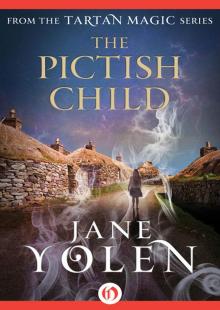 The Pictish Child
The Pictish Child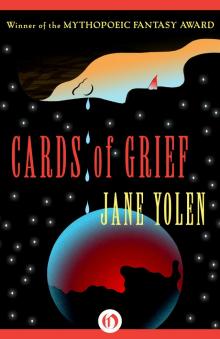 Cards of Grief
Cards of Grief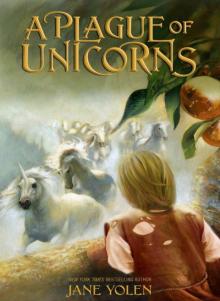 A Plague of Unicorns
A Plague of Unicorns Heart's Blood
Heart's Blood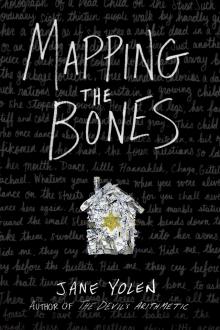 Mapping the Bones
Mapping the Bones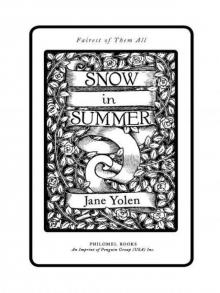 Snow in Summer
Snow in Summer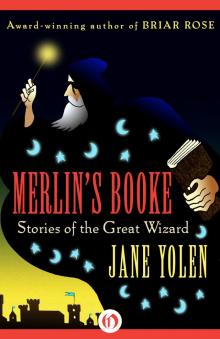 Merlin's Booke: Stories of the Great Wizard
Merlin's Booke: Stories of the Great Wizard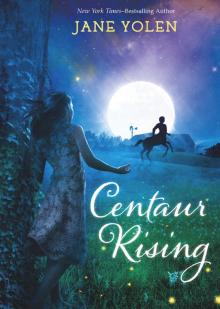 Centaur Rising
Centaur Rising The One-Armed Queen
The One-Armed Queen Dragon's Blood
Dragon's Blood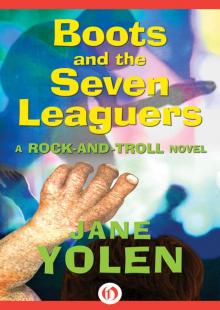 Boots and the Seven Leaguers
Boots and the Seven Leaguers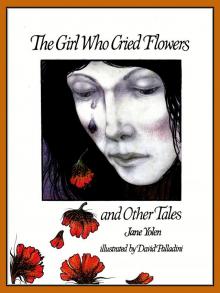 The Girl Who Cried Flowers and Other Tales
The Girl Who Cried Flowers and Other Tales The Wizard of Washington Square
The Wizard of Washington Square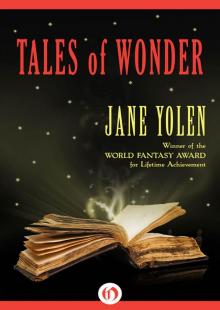 Tales of Wonder
Tales of Wonder The Emerald Circus
The Emerald Circus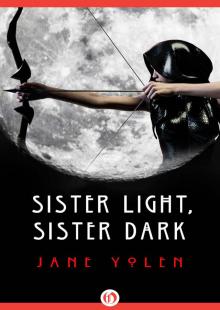 Sister Light, Sister Dark
Sister Light, Sister Dark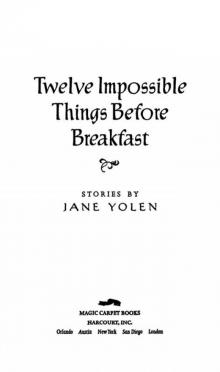 Twelve Impossible Things Before Breakfast
Twelve Impossible Things Before Breakfast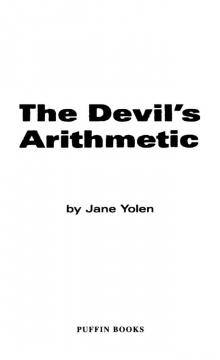 The Devil's Arithmetic
The Devil's Arithmetic Trash Mountain
Trash Mountain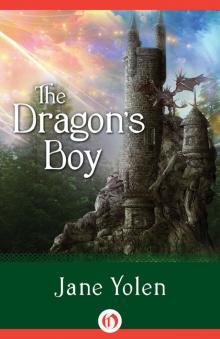 The Dragon's Boy
The Dragon's Boy A Sending of Dragons
A Sending of Dragons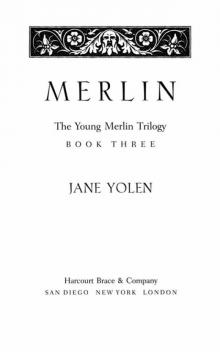 The Young Merlin Trilogy
The Young Merlin Trilogy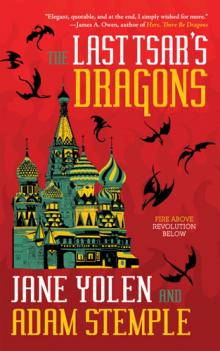 The Last Tsar's Dragons
The Last Tsar's Dragons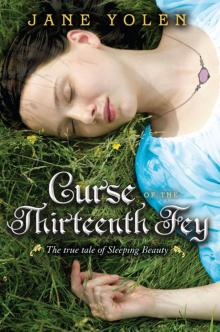 Curse of the Thirteenth Fey: The True Tale of Sleeping Beauty
Curse of the Thirteenth Fey: The True Tale of Sleeping Beauty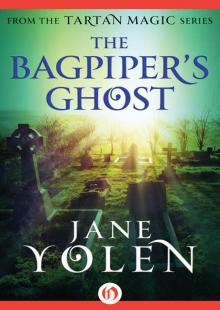 The Bagpiper's Ghost
The Bagpiper's Ghost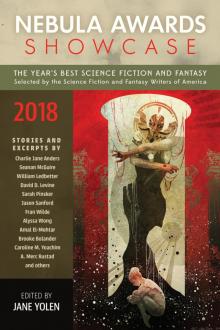 Nebula Awards Showcase 2018
Nebula Awards Showcase 2018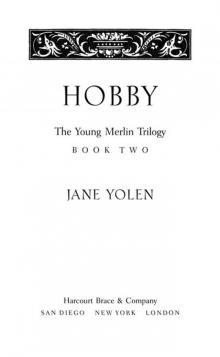 Hobby
Hobby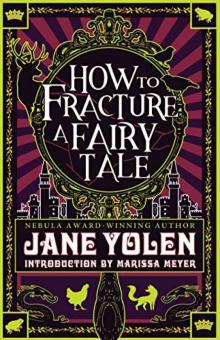 How to Fracture a Fairy Tale: 2
How to Fracture a Fairy Tale: 2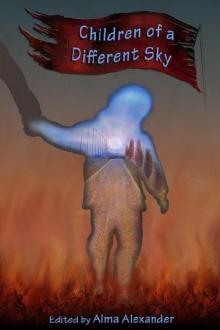 Children of a Different Sky
Children of a Different Sky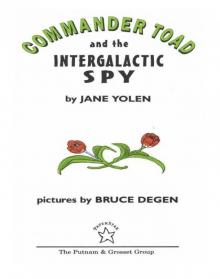 Commander Toad and the Intergalactic Spy
Commander Toad and the Intergalactic Spy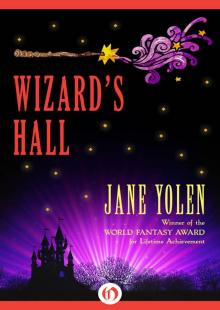 Wizard’s Hall
Wizard’s Hall The Transfigured Hart
The Transfigured Hart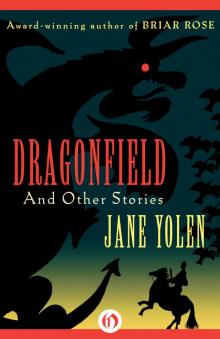 Dragonfield: And Other Stories
Dragonfield: And Other Stories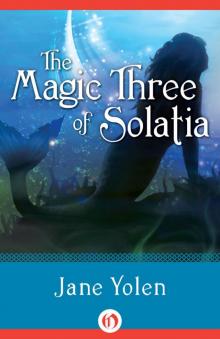 The Magic Three of Solatia
The Magic Three of Solatia The Great Alta Saga Omnibus
The Great Alta Saga Omnibus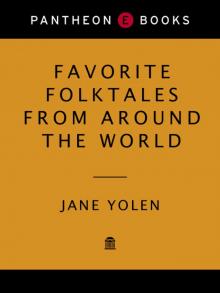 Favorite Folktales From Around the World
Favorite Folktales From Around the World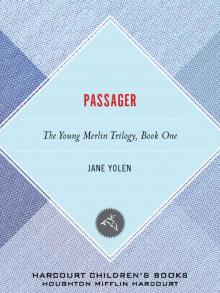 Passager
Passager The Wizard's Map
The Wizard's Map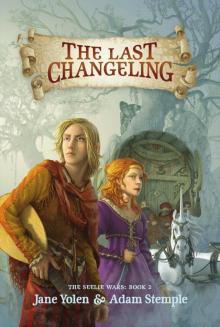 The Last Changeling
The Last Changeling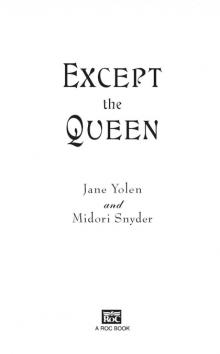 Except the Queen
Except the Queen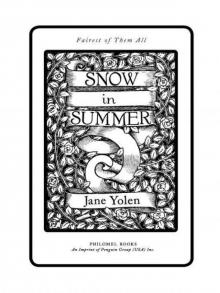 Snow in Summer: Fairest of Them All: Fairest of Them All
Snow in Summer: Fairest of Them All: Fairest of Them All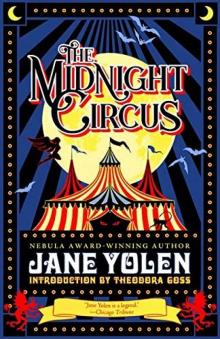 The Midnight Circus
The Midnight Circus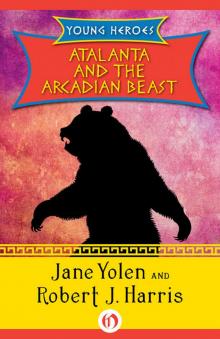 Atalanta and the Arcadian Beast
Atalanta and the Arcadian Beast Finding Baba Yaga
Finding Baba Yaga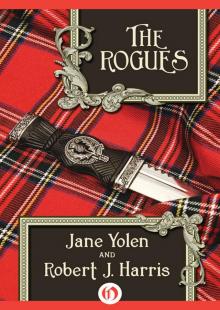 The Rogues
The Rogues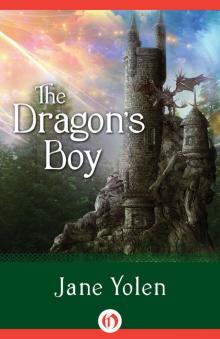 Dragon's Boy
Dragon's Boy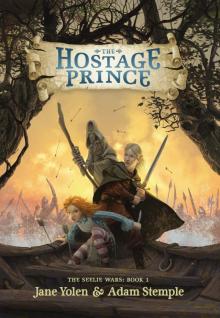 The Hostage Prince
The Hostage Prince Wizard of Washington Square
Wizard of Washington Square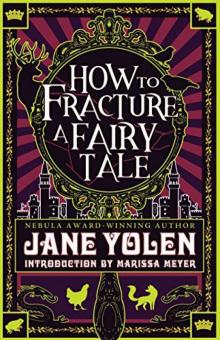 How to Fracture a Fairy Tale
How to Fracture a Fairy Tale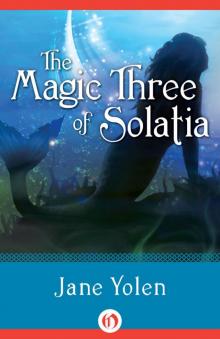 Magic Three of Solatia
Magic Three of Solatia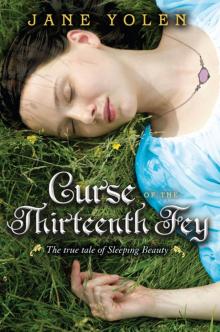 Curse of the Thirteenth Fey
Curse of the Thirteenth Fey My Brothers' Flying Machine
My Brothers' Flying Machine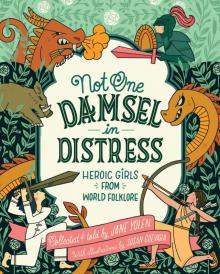 Not One Damsel in Distress
Not One Damsel in Distress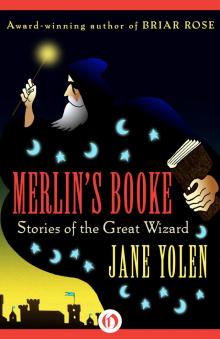 Merlin's Booke
Merlin's Booke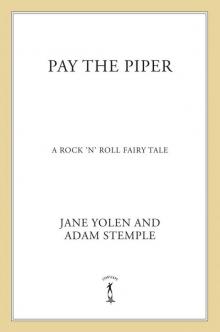 Pay the Piper: A Rock 'n' Roll Fairy Tale
Pay the Piper: A Rock 'n' Roll Fairy Tale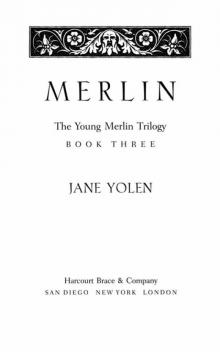 Merlin
Merlin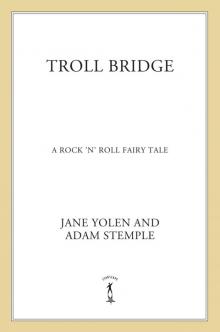 Troll Bridge
Troll Bridge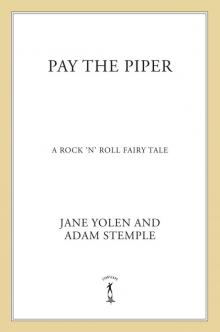 Pay the Piper
Pay the Piper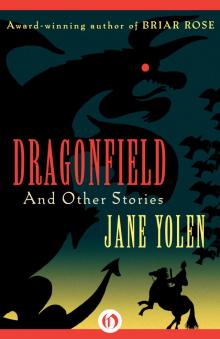 Dragonfield
Dragonfield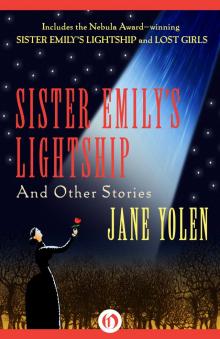 Sister Emily's Lightship
Sister Emily's Lightship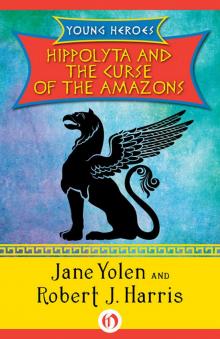 Hippolyta and the Curse of the Amazons
Hippolyta and the Curse of the Amazons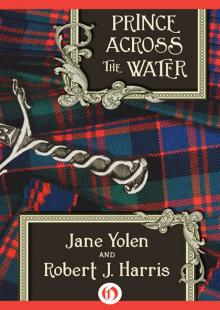 Prince Across the Water
Prince Across the Water Dragon's Heart
Dragon's Heart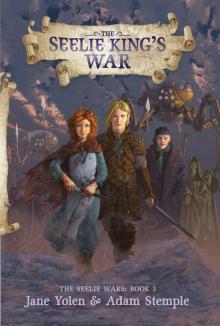 The Seelie King's War
The Seelie King's War Among Angels
Among Angels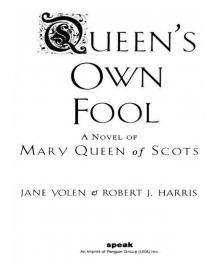 Queen's Own Fool
Queen's Own Fool